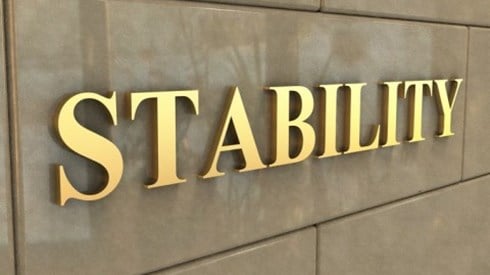Captive Insurers and the 2019 Reinsurance Markets

January 07, 2019

As the year opens, many captive insurers have recently concluded renewing their reinsurance coverage programs for January 1, 2019. Reinsurance is an integral part of the risk management function for most captive insurers. Early indications are while reinsurers have sought rate increases, especially in the property catastrophe market, pricing has been relatively stable. "How Do Captive Insurers Use Reinsurance?" is a good refresher on reinsurance. This article pulls together information from several sources, including JLT Re and Willis Re.
The JLT Re report titled "Reinsurance Market Enters Uncharted Territory at 1 January 2019" and the Willis Re report titled Willis Re 1st View: Contrasting Realities reach fairly similar conclusions. The former focuses primarily on reinsurance, while the latter delves into both the insurance-linked securities (ILS) market and the primary markets as well. Each captive's experience with reinsurance renewals this year will be different, but smart executives should understand the dynamics in the markets and also be asking the right questions of their reinsurance brokers.
We'll start by reviewing the information from the JLT Re article. The headlines from this report are as follows.
- Pricing was broadly stable at the January 1, 2019, renewal, despite pressures building in the reinsurance market.
- Rate increases were restricted to classes suffering sizable losses or where performance has deteriorated.
- Tightening supply dynamics and continued large losses absorbed some of the excess capital at the margin, although the reinsurance market remains well-capitalized overall.
As JLT Re remarks, it should come as no surprise that rates deteriorated and pricing increased in the property-catastrophe markets. While 2018 began on a rather benign note with natural catastrophe losses of approximately $20 billion, the second half of the year deteriorated considerably with total losses of approximately $80 billion estimated for the full year. The sources of these losses were Hurricanes Florence and Michael and the California wildfires here in the United States and typhoons and flooding in the Pacific and specifically Japan.
JLT Re states as follows.
All in, 2018 registers as the fourth most costly catastrophe year ever in real terms and follows record insured catastrophe losses of USD 150 billion in 2017. Together, 2017 and 2018 constitute the most costly 2-year period ever for insured catastrophe losses, although they are unlikely to come close to challenging the combined, inflation-adjusted, reinsured losses sustained in 2004 and 2005.
The JLT Re report goes on to summarize the renewal outcomes by line of business. Captive insurers would be well advised to compare their renewal rates with market averages. If there are significant differences, further digging should be done to ascertain the reasons behind the divergence from the average. Of course, most captives likely will only undertake this exercise if their pricing was higher than the average. However, it is always advantageous to understand why your captive might have seen better-than-expected renewal pricing as well. By doing so, management can then pinpoint areas they may hold some control over where pricing is concerned and look to positively influence these areas to continue the lower pricing increases.
The Willis Re commentary also looks at early indicators of how the ILS markets and the primary markets behaved as of January 1, 2019. Its observations of both markets are as follows.
With regard to the primary markets, the report stated as follows.
Unlike prior cycles where reinsurance informed primary market pricing some primary lines are seeing significantly larger rate increases than is the case with treaty reinsurance business. Adjustments to many [insurers'] portfolios, which started to be initiated 12 months ago, have taken on an increased urgency with a number pulling out of unprofitable lines completely or seeking to implement more aggressive rate improvements on underperforming lines.
S&P Global Market Intelligence updated its 2018 outlook by line of business just before year-end. For property-casualty insurers, six business lines had combined ratios in excess of 100 percent. From worst to best, these lines are as follows.
- Commercial Auto
- General Liability
- Accident and Health
- Medical Malpractice Liability
- Commercial Multiperil
- Personal Auto
Captive insurers are active writers of the majority of these lines. Based on the Willis Re commentary, the big primary commercial writers have been actively raising rates on these lines of business. Unfortunately for the captive insurance market, there is no report that captures how the alternative market participants have responded or if their experience is different from the traditional players in the market. What this does suggest is that captives need to be well attuned to what is occurring outside of their own market niche because these changes can ultimately impact captives as well.
We'll close with brief commentary on the ILS market from the Willis Re report.
The Insurance-Linked Securities (ILS) market is facing a more comprehensive test as higher returns post-2017 losses did not materialize as anticipated.… Some ILS products, most noticeably aggregate catastrophe and retro covers, have performed poorly for investors, thereby resulting in less available capital—although this is balanced by other ILS products that have continued to deliver acceptable returns. The variation of individual ILS funds' exposures to different product types is starting to impact the ability of many funds to attract new investors.
What all this suggests to us is captives should be actively engaged in monitoring performance of both the primary and reinsurance markets. While both commentaries note the reinsurance markets remain well capitalized, the ILS markets have been a steady source of alternative capital over the last 5 years. If investors are starting to pull back committing capital to these securities, it could presage a more aggressive campaign from reinsurers in the second half of 2019 to increase pricing. Buyers need to stay vigilant.
January 07, 2019

